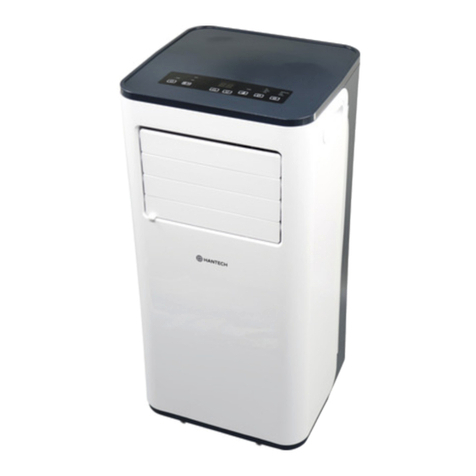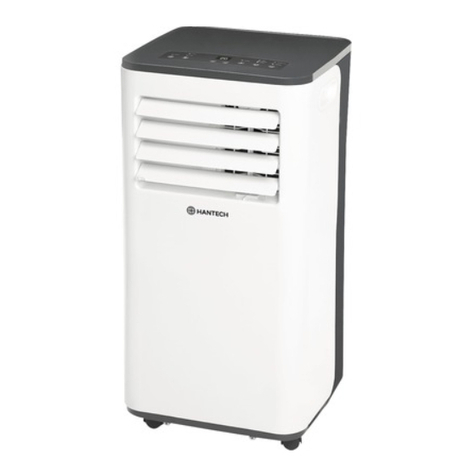
EN
*The air conditioning is only suitable for indoor use, and is not suitable
for other applications.
*Follow local grid interconnection rules while installing the air
conditioning and ensure that it is properly grounded. If you have any
question on electrical installation, follow the instructions of the
manufacturer, and if necessary, ask a professional electrician to install
it.
*Place the machine in a flat and dry place and keep a distance of above
50cm between the machine and the surrounding objects or walls.
*After the air conditioning is installed, ensure that the power plug is
intact and firmly plugged into the power outlet, and place the power cord
orderly to prevent someone from being tripped or pulling out the plug.
*Do not put any object into the air inlet and outlet of the air conditioning.
Keep the air inlet and outlet free from obstructions.
*When drainage pipes are installed, ensure that the drainage pipes are
properly connected, and are not distorted or bended.
* While adjusting the upper and lower wind-guide strips of the air outlet,
pluck it with hands gently to avoid damaging wind-guide strips.
*When moving the machine, make sure that it is in an upright position.
*The machine should stay away from gasoline, flammable gas, stoves
and other heat sources.
* Don't disassemble, overhaul and modify the machine arbitrarily,
otherwise it will cause a machine malfunction or even bring harm to
persons and properties. To avoid danger, if a machine failure occurs,
ask the manufacturer or professionals to repair it.
* Do not install and use the air conditioning in the bathroom or other
humid environments.
* Do not pull the plug to turn off the machine.
* Do not place cups or other objects on the body to prevent water or
other liquids from spilling into the air conditioning.
*Do not use insecticide sprays or other flammable substances near the
air conditioning.
* Do not wipe or wash the air conditioning with chemical solvents such

























